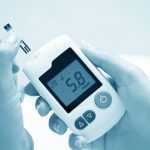With increasing concerns for patient safety and efficient supply chain management, a single, globally harmonized identification system for medical devices is needed. Companies marketing in USA are very familiar with UDI medical devices across its distribution channel. Other countries (South Korea, China, India, are also trying to implement the UDI system as their foundation. In Brazil, the regulations will only apply to hip and knee implants and stents (heart). India wants to introduce a comprehensive UDI as of 2022. Starting next year, the voluntary program will also become mandatory in Taiwan and Saudi Arabia. In South Korea, the UDI will be introduced by 2022, similar to Europe’s tiered risk classes. China is currently working on another pilot project which is supposed to run until July 2020. Turkey, Russia, and Australia are also working on similar systems or are already implementing them.
Europe, as part of EU MDR, needs UDI from 2021. Some of the documents where UDI is referenced for Europe include: Technical Documentation, EU Declaration of Conformity, Product Certificate, EU Technical Documentation assessment certificate, EU type examination certificate, EU product verification certificate, Certificate of Free Sale, SSCP, Vigilance and Post-Market Surveillance Reports, Manufacturer Incident Reporting form (MIR), PSUR, Field Safety Corrective Action Reporting form, PSR, Trend Reporting form, and Clinical investigation forms for post-market studies
Lack of unity makes UDI aspects complicated
This article focuses mainly on devices that manufactures have in USA and EU
GMDN
GMDN is managed by GMDN Agency; it is a non-profit organization and registered charity, which reports to its board of trustees that represent medical device regulators and industry.The GMDN is widely used by many countries today; mainly…
- US FDA require GMDN in their national regulation of Unique Device Identification (UDI Rule)
- European Commission uses the GMDN for their current market surveillance database (EUDAMED) and are evaluating use for their new regulation (MDR & IVDR)
- The WHO uses the GMDN in their publications.
- Widely supported by device Trade Associations (GMTA, DITTA, Advamed, MedTech Europe, etc.) in promoting global harmonization & reducing costs of compliance
GMDN is available in English language. GMDN Terms and Definitions are translated into many languages preference of main page of GMDN website. EC has already translated the GMDN into 20 languages. And, WHO & MSF use GMDN in guidance for developing countries. GMDN is Collaboration Agreement with Snomed CT International Health Terminology Standards Development Organization (IHTSDO).
GMDN Code System: The GMDN term is in the form of a 5-digit numeric GMDN Code cross-referenced to a specific Term Name and Definition, with which all specific medical devices having substantially similar generic features, can be identified.
CND
As per MDCG recommendations, CND will be used from Italy’s National classification codes (CND) as the basis for the future EUDAMED. So all manufacturers should use CND system for devices in European region, instead of GMDN.CND system, which represents the basis of the whole information system on medical devices is formally approved and thus constitutes an official reference, freely available to all stakeholders for marketed devices in EU region.
CND Classification has an alpha-numeric type structure which, following the criterion of product differentiation by intended use and or by anatomical functional location develops as a multilevel hierarchical tree and aggregates medical devices into Categories, Groups and Types.
In CND, Each type of device, constituting a terminal branch of the classification, is assigned an alphanumeric code consisting of a letter identifying the category where the device is located, a pair of identification numbers of the Group to which it belongs, within the category, and by a series of other pairs of numbers (whose number depends on the level of detail of that part of the classification – max 7, which as a whole identify the type of homogeneous products).
CND is characterized by its alphanumeric structure that is established in a multi-level hierarchical tree. It clusters medical devices in three main levels:
- Category: the first hierarchical level
- Group: the second hierarchical level
- Type: the third hierarchical level (which if necessary, expands into several levels of detail (1°, 2°, 3°, 4° e 5°))
Alignment between CND and GMDN:
“GMDN is a list of generic names used to identify all medical device products. Such products include those used in the diagnosis, prevention, monitoring, treatment or alleviation of disease or injury in humans”.“CND is the Italian classification that groups’ medical devices into homogeneous categories of products intended to carry out a similar therapeutic diagnostic intervention and will be used in European Union, specifically called as EMDN (European Medical Device Nomenclature)”.
The correspondence between nomenclatures will be visible to operators and incorporated in the future database. This will allow all operators registering their device to find CND nomenclature equivalent to a GMDN code.
In GMDN nomenclature, only available device terms available that can be used for the recognition of the devices.These device terms to betaken into consideration and align these terms in the terminal classification level of the verified CND. For the purposes of correlation, three different scenarios discussed:
- Preferred term of GMDN corresponds to a terminal level of CND
- Preferential term is placed at a non-terminal level of CND
- Preferential term is placed at a level of detail greater than the last level of CND
Ongoing GMDN/CND Activities:
- Ensure to register and update codes with Eudamed and GUDID in UDI part
- Ensure to check codes as per GMDN, WHO/CND codes
- Ensure to check device nomenclature codes for EC, FDA and other regulatory authorities approved devices
- Keep up to date & Coordinate with NBs and Eudamed/ GUDID as well as other databases
- Periodic review for medical device code, investigational studies, vigilance and market surveillance.
EU’s MDR & IVDR regulations and MDCG recommendations, GMDN code system will map to Italian CND codes for ease of use in EUDAMED by manufacturers or responsible personals. Meanwhile device manufacturers can start familiarizing yourselves with the new nomenclature and investigate on how device manufacturers will tackle this device nomenclature system in ERP systems (replace GMDN by CND or have both codes) to ensure device master data can be updated easily. Once the mapping of the CND nomenclature to the GMDN nomenclature has been done, manufacturers can update device master data to reflect the new codes.


